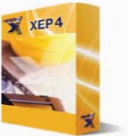
XSL FO to HTML Converter |
||||
|
XSL Formatting Objects are an XML dialect so they may be converted using an XSL style sheet. The translator is an attempt to materialize this idea. |
||||
Background |
||||
|
These style sheets have been prepared by RenderX development team as an add-on to our principal product, XEP Engine. Please download the style sheet and try to view your favorite XSL FO (XSLFO) documents in a browser. Don't expect the result to be perfect — see below about limitations. If you plan to extend it to cover more or another version of the recommendation, please share your accomplishments with us. |
||||
Possible Use |
||||
|
A stylesheet like this may be used to reduce the complexity in a publishing system with multiple target media. It enables you to generate XSL FO (XSLFO) from semantic XML data, and use it as a source for all other presentation formats. When your data structure changes, you only have to modify XML-to-XSL FO stylesheet |
||||
Technical Notes |
||||
|
The stylesheet tries to convert XSL FO (XSLFO) data into HTML+CSS1. CSS2 support is still rare among browsers, and hardly can be relied upon. Even with CSS1, there are many discrepancies between Microsoft Internet Explorer and Netscape Communicator. However, one can hardly do this task without using any stylesheet capabilities at all, so CSS1 seemed to be a common denominator. It goes without saying that XSL FO (XSLFO) is much more powerful than HTML+CSS1. Moreover, since paged media are organized differently from scrollable media, absolute similarity is not achievable. Therefore, the conversion aims mostly at giving the user a possibility to browse XSL FO (XSLFO) files, without pretending to preserve all formatting subtleties predisposed for quality printing. The task is also simplified by common vocabulary shared by XSL FO (XSLFO) and CSS. With this premises, the problem can be solved by amazingly simple means. A 30 kb stylesheet does the bulk of the work. Certainly, not everything can be achieved easily. For instance, calculating the inheritance propagation along the FO tree is a really tough task, as is parsing CSS2 shorthands in XSLT. We didn't even attempted to tackle this. in our opinion, this is more easily achieved by a preprocessor. RenderX has such a preprocessor built into XEP, redirecting its output into a file gives us a "canonical" XSL FO (XSLFO) document — with all shorthands expanded, inheritance propagated, length units normalized, etc. However, if your XSL FO (XSLFO) documents do not make use of shorthands, multiple columns, absolutely positioned blocks and similar advanced features, the results of the conversion can be very close to the truth even without preprocessing. This requires special care while writing XSL FO (XSLFO) stylesheets, but our experience shows it can be accomplished. |
||||



